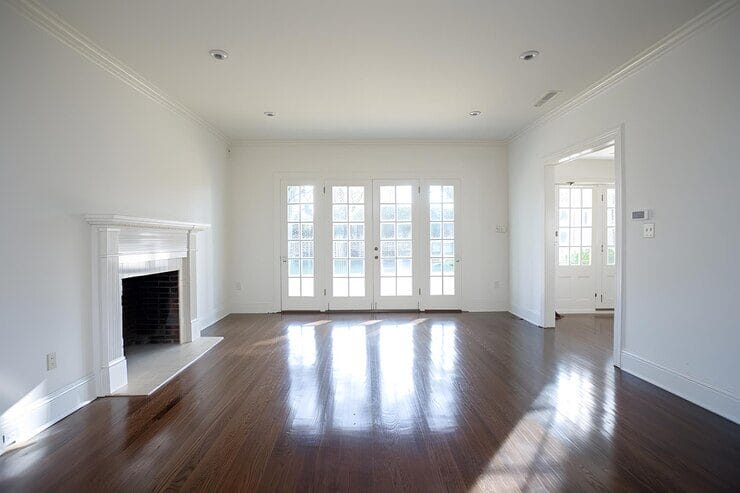Empty homes can feel cold, disconnected, and harder to sell. But when staged right, even the most vacant space can spark emotional connection and imagination. Staged homes sell 73% faster and often earn 5–15% more than their empty counterparts. So, should you stage an empty house? The numbers and psychology say yes.
This guide combines practical know-how, budget-friendly tips, and emotional staging secrets to help you turn any blank space into a buyer magnet.
Why Vacant Staging Matters
Imagine walking into a house with echoing rooms and bare walls. Now picture that same space with warm lighting, neutral textures, and soft scents that say “welcome home.”
Vacant staging is all about telling a story that buyers want to be part of. When buyers can visualize themselves living there, they form emotional connections that often lead to faster, higher offers.
Planning Your Staging on a Budget
You don’t need a massive budget to stage effectively. Here’s how to make the biggest impact with the smallest spend:
- Declutter and Deep Clean: Empty homes show every flaw. Scrub floors, shine windows, and freshen up baseboards.
- Use What You Have: Repurpose your decor or borrow from friends. Throw pillows, rugs, and plants go a long way.
- Focus on High-Impact Areas: Prioritize the living room, kitchen, and primary bedroom.
- DIY Fixes: Repaint walls in soft neutrals. Replace outdated cabinet handles. Small upgrades = big returns.
Soft Staging: Use decor-only items like artwork, textiles, and lighting if furniture isn’t available.

Room-by-Room Staging Tips
Living Room
- Define a conversation area with a rug and chairs
- Add warm lighting with floor or table lamps
- Place artwork or mirrors to visually expand the space
- Add cozy accents: pillows, a plant, or a soft throw
Kitchen
- Clear counters completely
- Add pops of life: a bowl of fruit or a cookbook stand
- Update cabinet hardware if dated
- Use scent: citrus or linen diffusers work well
Bedrooms
- Use neutral bedding, pillows, and rugs to warm the space
- Stage nightstands with simple lamps and greenery
- Open curtains and turn on all lights
Bathrooms
- Add white or light towels and bath mats
- Use small trays with candles or soap dispensers
- Ensure every surface shines
Entryways & Exteriors
- Add a welcome mat and potted plant at the door
- Clean windows, sweep porches, and mow lawns
- If space allows, place a bench or console table
Soft Staging & No-Furniture Hacks
If renting full furniture isn’t in the budget, soft staging can still transform a space.
- Area rugs: Define room functions without bulky furniture
- Mirrors: Reflect light and make rooms feel bigger
- Artwork & textiles: Warm up bare walls and surfaces
- Minimal décor: Even a lamp and chair can establish a reading nook
- Virtual staging: Add furniture digitally to online listings
Pro Tip: Use lighting and scent to appeal to buyers’ senses. Think vanilla candles and soft background music.
Lighting, Mirrors, and Scent: Creating Sensory Appeal
- Lighting: Use warm LEDs and multiple light sources in each room
- Mirrors: Place opposite windows to double brightness and openness
- Scents: Stick to clean, familiar aromas: vanilla, lavender, linen
- Sound: Low-volume soft music can evoke calm and warmth
Common Staging Mistakes to Avoid
- Overstaging or understaging: Don’t crowd or neglect rooms
- Bold color choices: Use soft neutrals that appeal to most buyers
- Leaving awkward furniture behind: Stage with intention or not at all
Ignoring sensory elements: Buyers respond emotionally
Virtual Staging vs. Physical Staging
| Type | Pros | Cons |
| Virtual | Cost-effective, great for online listings | No impact during in-person showings |
| Physical | Creates real emotional connections | Higher upfront costs |
Use virtual staging to attract clicks, and physical staging for emotional closings.
Final Staging Checklist
- Declutter and deep clean
- Add light, texture, and color thoughtfully
- Highlight architectural features
- Ensure every room has a defined purpose
- Appeal to all five senses
FAQs: Staging Empty Homes
1. Is vacant home staging worth the investment?
Yes, vacant home staging is absolutely worth the investment. A professionally staged home typically sells faster and at a higher price compared to an empty property. When a home is vacant, buyers may struggle to connect with it emotionally or imagine how their belongings will fit. Staging fills that visual gap. According to real estate data, staged homes can sell up to 20% faster and for 6-10% more than non-staged ones.
2. Can I stage a vacant home myself, or should I hire a pro?
You can stage a vacant home yourself if you’re on a tight budget, but hiring a professional stager is often the smarter move. Pros know how to strategically place furniture, choose the right neutral decor for vacant home appeal and highlight architectural features that you might overlook. However, if you’re confident in your design skills, you can consider soft staging with rented furniture, throw pillows, rugs and accent lighting to keep costs low while still creating impact.
3. What’s the biggest mistake people make with vacant staging?
One of the biggest mistakes is over-staging or under-staging. Too much furniture can make rooms feel cramped, while too little leaves the space looking bare and uninviting. Another common misstep is ignoring key sensory elements like lighting, scent, and sound, which are crucial in creating an emotional connection. Additionally, some sellers make the mistake of choosing bold colors or personal styles that may not appeal to most buyers.
4. How much does it cost to stage an empty house?
The cost can vary widely based on location, home size, and how much furniture is needed. On average, vacant home staging costs between $1,500 to $5,000, depending on whether you’re renting furniture, hiring a full-service staging company, or opting for partial staging. Some companies also offer virtual staging for a fraction of the cost, typically around $30 to $100 per image, which is great for online listings, though it doesn’t help with in-person showings. Consider your timeline and potential ROI before deciding.
5. Should I leave any furniture behind when selling a vacant unit?
Only if it serves a purpose in showcasing the space. Leaving behind a single couch or dining table often looks incomplete and can actually make a home feel more awkward. Instead, go for a cohesive, intentional look. If you’re not hiring a staging company, consider renting matching furniture for key areas like the living room, master bedroom, and kitchen.
Conclusion
When done right, vacant staging turns an empty shell into a dream home. By layering in warmth, defining spaces, and appealing to emotion, you’re not just decorating, you’re storytelling.
Need expert help staging your empty home in Edmonton?
The Staging Place offers full-service and budget-friendly options tailored to your space. Contact us today to book your consultation and create a space buyers won’t forget.


